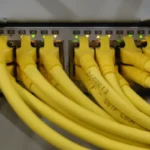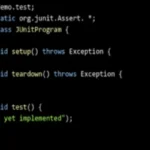AI for Teachers: Innovations making education smarter and more personalized for students worldwide
Artificial intelligence (AI) is rapidly transforming how teachers teach, how students learn, and how schools operate. Across classrooms worldwide, AI is no longer just a futuristic concept—it’s an active partner in personalizing education, optimizing workloads, and bridging learning gaps. Whether through adaptive learning platforms or automated grading systems, AI is helping teachers deliver more effective, student-centered instruction.
The Role of AI in Modern Classrooms
Teachers face increasing demands—meeting diverse student needs, managing administrative tasks, and integrating digital tools. AI assists by analyzing student data, predicting learning outcomes, and creating personalized educational paths. Essentially, it acts as a digital assistant for teachers, providing real-time insights into performance and engagement levels.
Key benefits include:
- Time-saving automation: Grading, attendance, and progress tracking can be done instantly.
- Individualized learning paths: AI adjusts content to each student’s skill level and pace.
- Enhanced engagement: Interactive AI-powered platforms make lessons more dynamic.
Smart Tools Changing Education

AI technologies are redefining classroom innovation. Here are a few examples leading this transformation:
- Adaptive learning platforms like DreamBox or Century Tech analyze each student’s progress and modify lessons in real-time. This creates a personalized path toward mastery instead of a one-size-fits-all curriculum.
- AI tutors and chatbots such as Google’s Socratic app or Microsoft’s Reading Coach offer one-on-one support outside school hours, ensuring students always have help.
- Automated assessment systems use machine learning to evaluate essays or STEM problem-solving, allowing teachers to focus more on mentorship and less on grading.
- Speech and language tools like TextHelp or ELSA Speak assist students with pronunciation, reading fluency, and language acquisition—especially valuable for ESL learners.
Personalized Learning: Putting Students First
One of AI’s most powerful contributions is its ability to craft personalized learning experiences. Traditional teaching often struggles to accommodate varying student speeds and learning preferences. AI-driven systems solve this by continuously adapting.
For example, if a math student struggles with fractions, AI can identify the weakness instantly and recommend remedial exercises. Conversely, advanced learners get accelerated challenges, preventing disengagement. This adaptability ensures education becomes more equitable and inclusive.
Empowering Teachers with Data-Driven Insights
Teachers remain at the heart of learning. AI enhances their role rather than replaces it by supplying actionable insights drawn from classroom data. Learning analytics dashboards reveal patterns in student participation, comprehension, and emotional engagement.
Armed with this data, teachers can:
- Intervene early among struggling students.
- Tailor feedback for specific learning styles.
- Identify effective teaching methods.
AI doesn’t dictate instruction; it makes teaching evidence-based and precise.
Global Reach: Expanding Access to Quality Learning
AI education tools are bridging the global education divide. In remote or under-resourced areas, AI-powered apps can deliver lessons aligned with local curriculums without requiring constant teacher presence. Translation and voice recognition help students learn in multiple languages, breaking cultural and linguistic barriers.
In developing countries, where teacher shortages are common, these systems supplement instruction, ensuring every child can learn at their own pace, regardless of geography.
Ethical Use of AI in Education
While the promise of AI is immense, it also raises ethical questions. Protecting student privacy, avoiding algorithmic bias, and ensuring transparency must remain top priorities. Educators and policymakers must establish clear guidelines for AI use, making sure that data is secure and that AI complements human teaching rather than replacing it.
Responsible AI adoption means keeping humanity at the center of education. The goal isn’t a robotic school—it’s a more empathetic, inclusive, and effective learning ecosystem.
Real-World Success Stories: Schools Leading the Way with AI
Across the globe, innovative schools are demonstrating the transformative power of AI in education. In Finland, public schools piloted adaptive learning systems that adjusted math and reading curricula to individual students, resulting in a 15% increase in students reaching grade-level standards within a single year. In the United States, a New York City high school implemented an AI-driven grading assistant, freeing teachers from hours of paperwork and allowing them to focus on mentorship.
Educators have noted higher engagement during AI-powered lessons, and teachers report they can identify struggling students weeks earlier than before. These tangible results prove that when thoughtfully integrated, AI accelerates learning and supports both educators and students in meaningful ways.
Professional Development: Helping Teachers Harness AI
Empowering teachers with the skills and confidence to use AI tools is crucial for successful integration in the classroom. Schools and educational organizations now offer professional development programs such as online courses, hands-on workshops, and microcredentialing that focus specifically on AI and digital pedagogy. For example, the European Schoolnet’s Academy provides free webinars on using AI in formative assessment, while the ISTE Certification for Educators includes training in ethical AI use and innovative classroom applications.
Teachers who complete these programs report greater comfort with technology, increased creativity in lesson planning, and enthusiasm for lifelong learning. Continuous professional development ensures teachers stay ahead of technological change and can maximize the benefits AI offers for their students.
AI for Special Education: Supporting Diverse Learner Needs
AI technologies hold enormous promise for special education and diverse learning needs. Tools like Otter.ai and Speechify transform spoken instructions into written text, helping students with dyslexia or visual impairments follow along in real time. AI-driven platforms can personalize exercises for students with ADHD, keeping them engaged with bite-sized tasks and timely reminders. For learners on the autism spectrum, socially-aware avatars and communication aids offer alternative interaction modes, supporting emotional development.
By monitoring progress and adjusting content automatically, these solutions foster independence while giving teachers actionable insights to tailor instruction further. The result is an inclusive environment where every child receives the support needed to thrive.
Parental Involvement: Bridging the Gap Between Home and School
AI-powered platforms are making it easier for parents to become active partners in their child’s education. With real-time dashboards, parents can track learning progress, homework completion, and behavioral metrics from their smartphones. Some systems provide automated feedback and personalized recommendations for at-home learning tailored to their child’s unique needs.
The platforms also open direct, secure communication channels with teachers, allowing for immediate sharing of concerns and successes. While transparency boosts collaboration, schools maintain a strong commitment to privacy, ensuring data remains protected and only accessible to authorized users. This partnership creates a seamless support network between home and school, empowering students to excel.
Gamification and Motivation: Making Learning Fun
Gamification is reshaping how students engage with educational content, and AI is at the heart of this revolution. AI-powered platforms such as Khan Academy Kids and Prodigy tailor game-like challenges to students’ strengths and weaknesses, adapting in real-time to their progress. Learners earn points, unlock badges, and receive encouraging feedback as they master new concepts.
Not only does this approach boost motivation and retention, but it also reduces anxiety by fostering a growth mindset. Teachers report that gamified lessons increase participation and cultivate a love for learning—proving that education can be both fun and rigorous.
Addressing the Digital Divide: Ensuring Equity in AI Access
While AI offers powerful educational benefits, unequal access to technology remains a challenge. Rural and underserved communities can face barriers to adopting AI solutions, risking wider achievement gaps. Many governments and EdTech companies are addressing this challenge through public-private partnerships and funding programs that provide devices, internet connectivity, and AI-based educational licenses for free or at reduced cost.
Non-profit initiatives, such as One Laptop per Child and UNESCO’s mobile learning campaigns, ensure that innovative tools reach every student, regardless of background. By prioritizing equity and inclusion, these efforts ensure AI’s promise is accessible to all.
Human-AI Collaboration: The Evolving Role of Teachers
As AI takes over routine tasks, the role of the teacher evolves into that of facilitator, coach, and mentor. With administrative burdens lightened, teachers dedicate more time to fostering creativity, critical thinking, and emotional intelligence. AI supplies data-driven insights, but it is the teacher who sets the tone for empathy and collaboration in the classroom.
Maintaining a strong human connection is key—AI suggests interventions, but teachers interpret and implement them with social-emotional awareness. This partnership between human and machine ensures education remains personal, purposeful, and adaptive to every learner’s journey.
The Future of Teaching with AI
As AI continues evolving, the future classroom will become even more interactive, predictive, and customized. Teachers could soon collaborate with AI co-teachers that monitor classroom dynamics in real time, suggest new approaches, or even simulate learning environments through mixed reality.
The AI-driven transformation is not about replacing teachers but redefining teaching—empowering educators with better tools, freeing time for empathy and creativity, and preparing students for an intelligent, tech-driven world.




